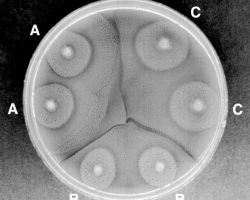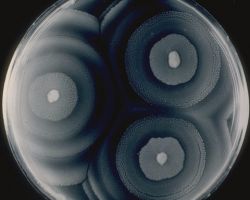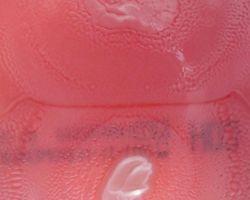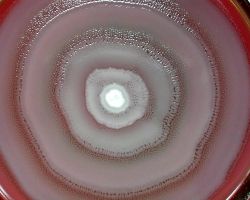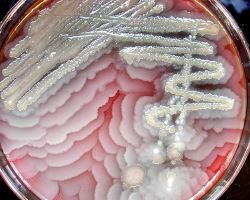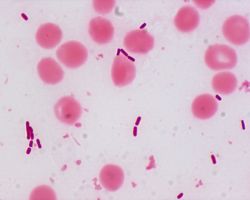SEARCH
Search
Dienes phenomenon test_P. mirabilis
-
General
Dienes phenomenon, when two identical Proteus cultures are inoculated at different points on the same plate of non-inhibitory medium, the resulting swarwing of growth coalesce without signs of demarcation.
When, however, two different strains of Proteus are inoculated, the spreading films of growth fail to coalesce and remain separated by a narrow easily visible area.
The observation of this appearance, the Dienes phenomenon has been used to determine the identity or non-identity of strains in epidemiological studies.
-
History
This phenomenon, observed by Dienes (1946), forms the basis of the Dienes test and, although the phenomenon has never been satisfactorily explained, it has been used successfully to determine the relationship between strains of Proteus species in studies of cross-infection (Story, I 954; Skirrow, I 969).
-
Related
-
References
wikipedia
Photo
https://jcm.asm.org/content/38/3/1077
MMIZ, ErasmusMC
Rotterdam

